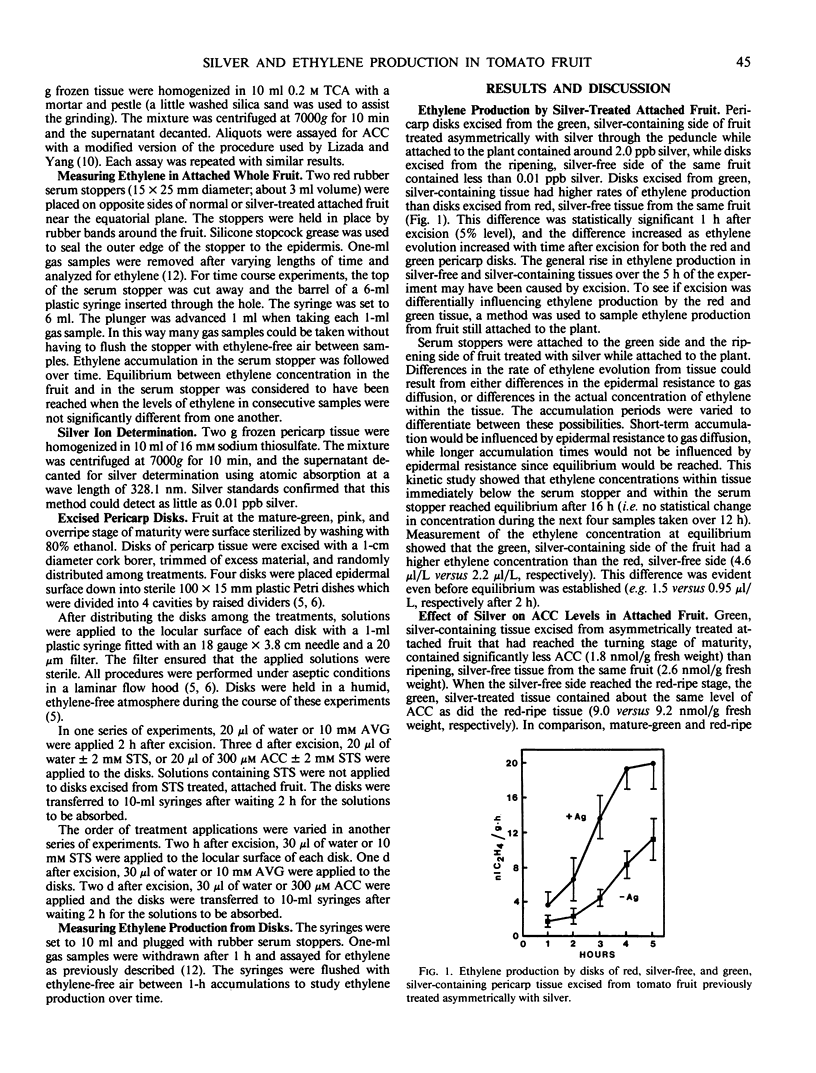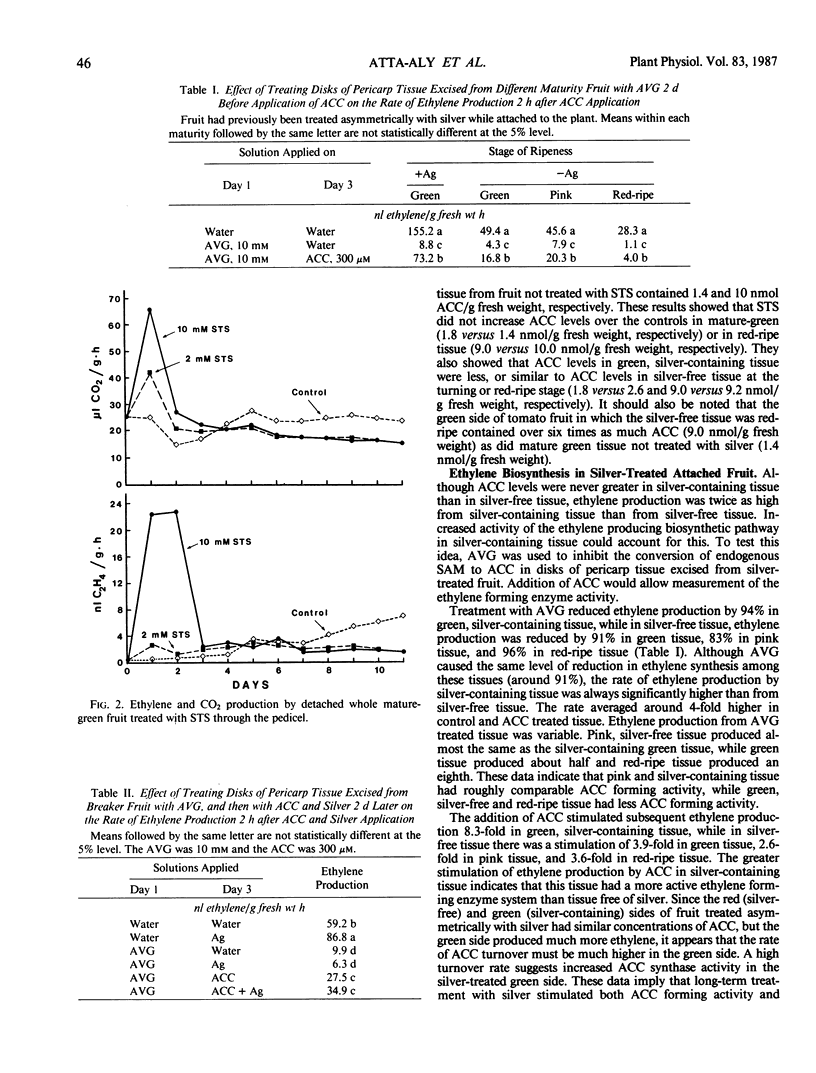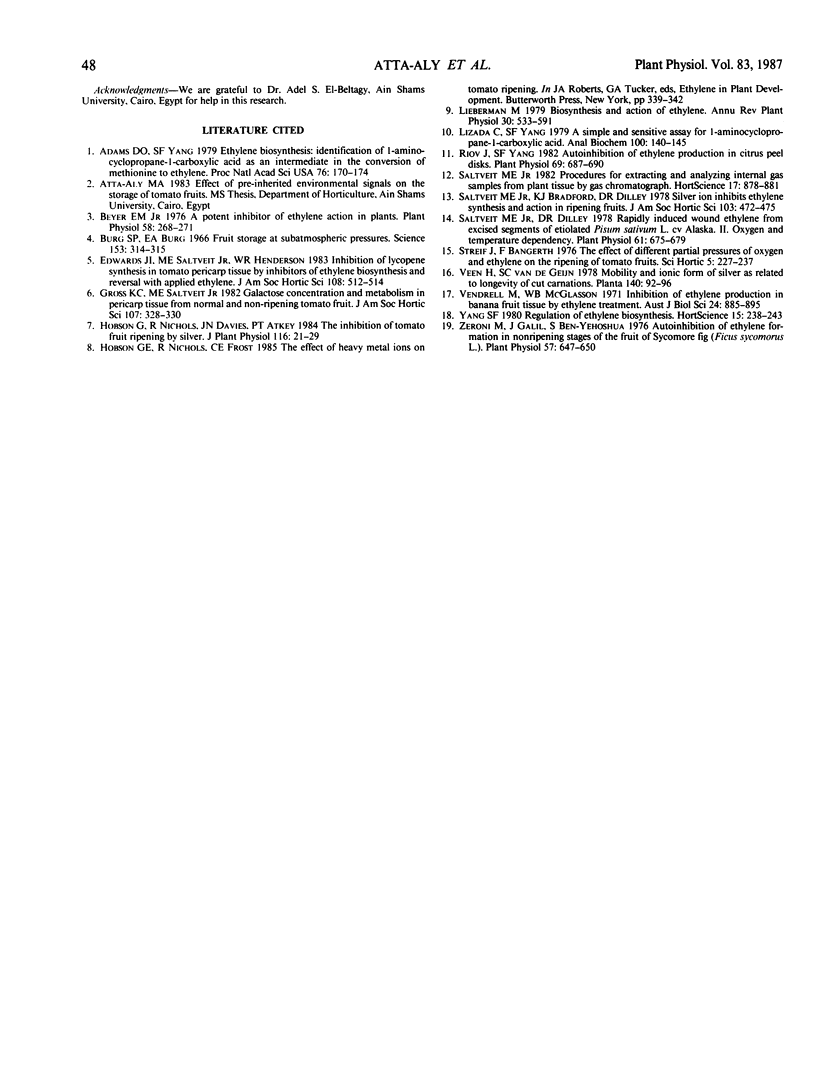Abstract
Mature-green tomato fruit (Lycopersicon esculentum Mill.) were treated asymmetrically with 2 millimolar silver thiosulfate (STS) through a cut portion of the peduncle while still attached to the plant. One-half of the fruit received silver and remained green while the other half ripened normally and was silver-free (less than 0.01 parts per billion). Harvested mature-green fruit were also treated with STS through the cut pedicel. Green tissue from silver-treated fruit had levels of 1-aminocyclopropane-1-carboxylic acid (ACC, the immediate ethylene precursor) slightly less or similar to that of turning or red-ripe tissue from the same fruit, and similar to that of mature-green tissue from control fruit. Ethylene production was higher in green tissue from silver-treated fruit than from either red tissue from the same fruit, or mature-green tissue from control fruit. By inhibiting ACC synthesis with aminoethoxyvinyl glycine, and by applying ACC ± silver to excised disks of pericarp tissue from control or silver-treated tomatoes, we showed that short-term silver treatment did not affect the biological conversion of ACC to ethylene, while long-term treatment stimulated both the conversion of ACC to ethylene and the synthesis of ACC.
Full text
PDF




Selected References
These references are in PubMed. This may not be the complete list of references from this article.
- Adams D. O., Yang S. F. Ethylene biosynthesis: Identification of 1-aminocyclopropane-1-carboxylic acid as an intermediate in the conversion of methionine to ethylene. Proc Natl Acad Sci U S A. 1979 Jan;76(1):170–174. doi: 10.1073/pnas.76.1.170. [DOI] [PMC free article] [PubMed] [Google Scholar]
- Beyer E. M. A potent inhibitor of ethylene action in plants. Plant Physiol. 1976 Sep;58(3):268–271. doi: 10.1104/pp.58.3.268. [DOI] [PMC free article] [PubMed] [Google Scholar]
- Burg S. P., Burg E. A. Fruit storage at subatmospheric pressures. Science. 1966 Jul 15;153(3733):314–315. doi: 10.1126/science.153.3733.314. [DOI] [PubMed] [Google Scholar]
- Lizada M. C., Yang S. F. A simple and sensitive assay for 1-aminocyclopropane-1-carboxylic acid. Anal Biochem. 1979 Nov 15;100(1):140–145. doi: 10.1016/0003-2697(79)90123-4. [DOI] [PubMed] [Google Scholar]
- Riov J., Yang S. F. Autoinhibition of Ethylene Production in Citrus Peel Discs : SUPPRESSION OF 1-AMINOCYCLOPROPANE-1-CARBOXYLIC ACID SYNTHESIS. Plant Physiol. 1982 Mar;69(3):687–690. doi: 10.1104/pp.69.3.687. [DOI] [PMC free article] [PubMed] [Google Scholar]
- Saltveit M. E., Dilley D. R. Rapidly Induced Wound Ethylene from Excised Segments of Etiolated Pisum sativum L., cv. Alaska: II. Oxygen and Temperature Dependency. Plant Physiol. 1978 Apr;61(4):675–679. doi: 10.1104/pp.61.4.675. [DOI] [PMC free article] [PubMed] [Google Scholar]
- Zeroni M., Galil J. Autoinhibition of Ethylene Formation in Nonripening Stages of the Fruit of Sycomore Fig (Ficus sycomorus L.). Plant Physiol. 1976 Apr;57(4):647–650. doi: 10.1104/pp.57.4.647. [DOI] [PMC free article] [PubMed] [Google Scholar]


